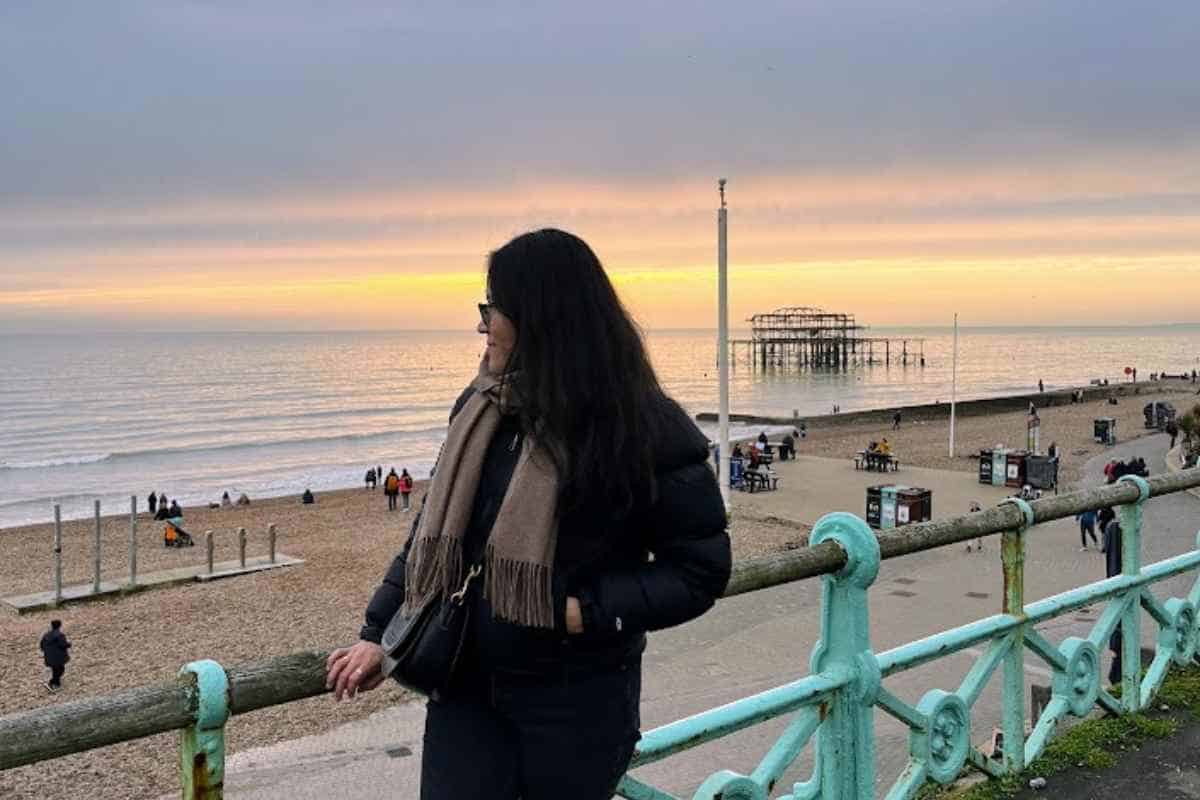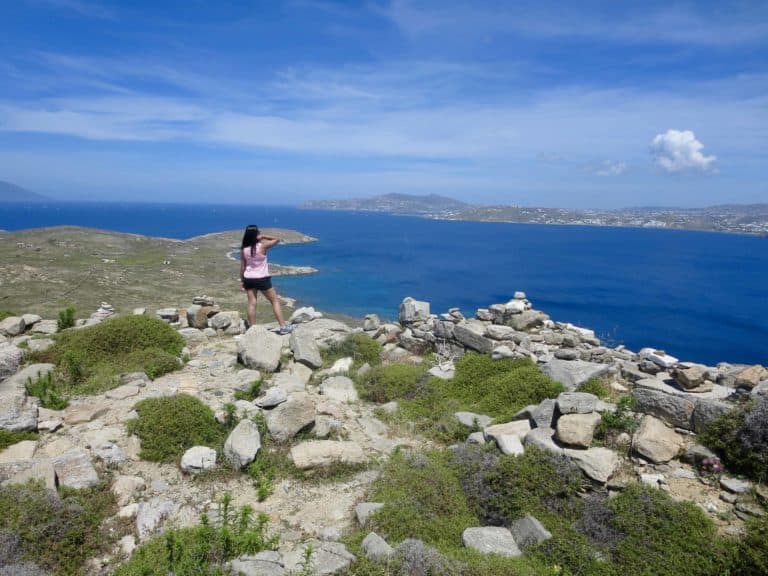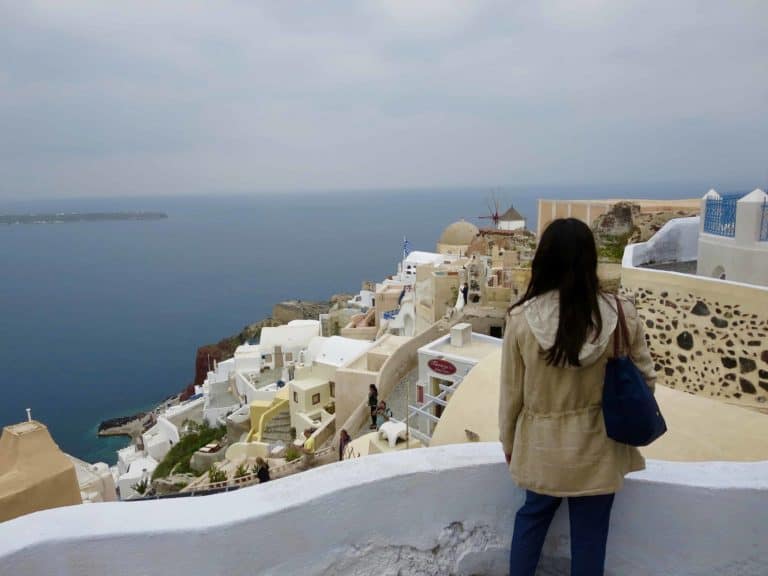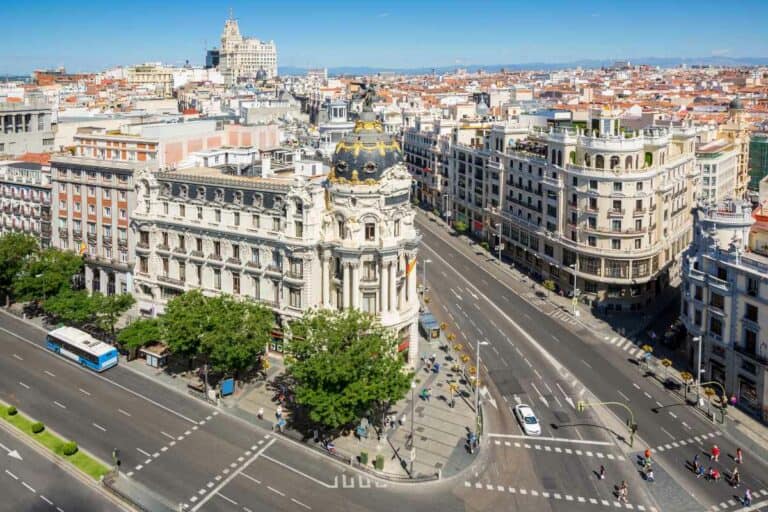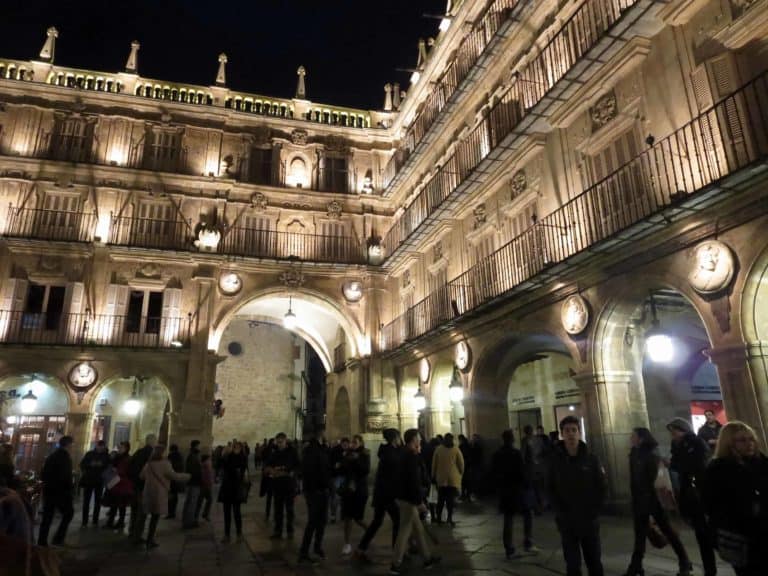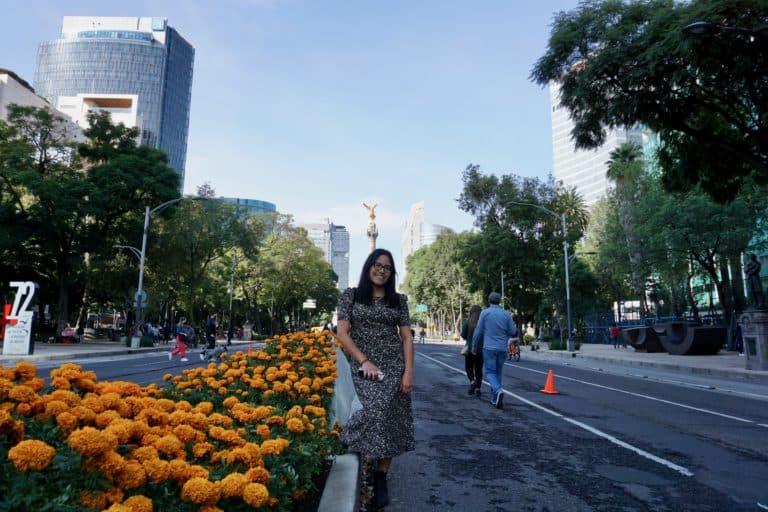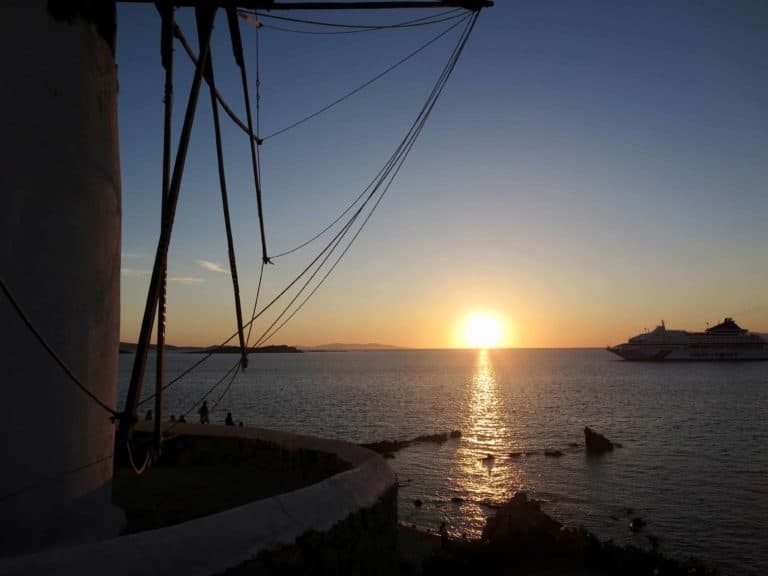My 36 Best Safety Tips as a Solo Latina Traveler
Are you looking for a few more safety tips to add to your list of best safety tips for travel as a solo Latina traveler?
I’ve been traveling for the past 10 years, and recently, I just started to travel on my own as a solo Latina.
As I’ve traveled through mostly Europe, the UK, and the Americas, I’ve gotten to not only learn the best ways to take care of myself, but also learn how to have fun doing it as I venture on my own, in confidence, and of course, peace of mind.
So in this post, I want to share my extended list of the 36 best safety tips as a solo Latina traveler that can, of course, be used by any female traveler whether Latina or not.
This is an accumulation of my best travel tips, with a few other safety suggestions for both a safe journey and practical tips to help make the journey smooth, as a solo Latina traveler, divided into a few categories for easier reading.
And even if you don’t identify with being a solo Latina traveler, these safety tips are sure to be useful for you, too!
These are guidelines meant to help you become aware of other things you may run into as you travel, and how to prepare best for them, especially if traveling solo.
So let’s get started!
Pre-Departure Best Safety Tips
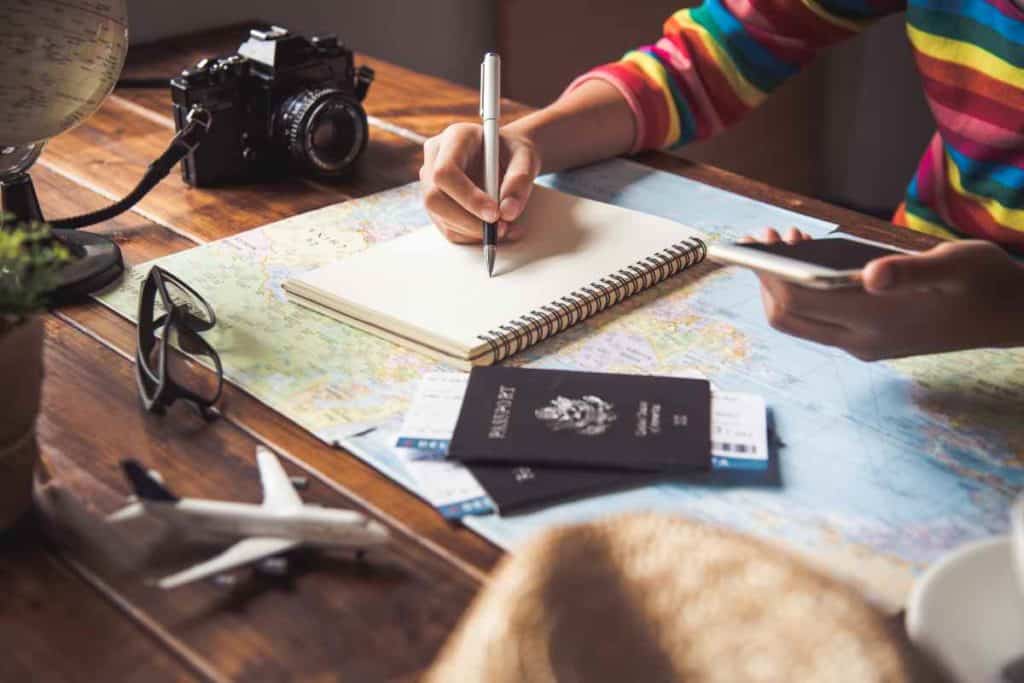
1. Research your destination well
Whether it’s picking your destination, or it’s asking yourself when it comes to booking your accommodations where to stay in X? – Planning and researching your destination well is key to a great and safe stay.
Depending on your travel intentions for this trip you’re about to embark on, there may be a certain ambiance that you’d like to be surrounded by, or simply speaking, you just want to make sure that the neighborhood you’re choosing is safe for a solo traveler.
After picking out your destination, next up is deciding where you’re going to stay – which can be overwhelming depending on where you are going.
Try looking at different resources online sharing the different neighborhoods in the city, considering the following:
- What the vibe is like
- What the neighborhood is known for
- What the safety is like
- Demographics of those who live in the area
- Connection to the city center or other sites you may be interested in checking out
A good way of finding out this information on a more local level is by checking out Facebook groups!
Search on Facebook keywords like “expats in X”, “X travel” “Females in X” or simply the name of your destination and see what comes up, and sign up to join.
Once accepted into the group, use the search bar to search for your question, or ask your question, and tons of expats or locals in the group will eagerly answer your question.
These are some of my favorite travel Facebook female groups (the last 2 give you an idea of how you can include your destination in your search):
- GoWonder – Female Solo Travel & Group Travel
- Girl vs. Globe
- Women Who Travel
- Girls Who Travel
- The Solo Female Traveler Network
- Girls LOVE Travel
- Viajeras: A Travel Latina Community
- Travel Spain
- Spain Travel & Food Community
A few other great resources to check out when searching the best safety tips for travel is reading blog posts on safety at your destination, searching on Instagram, Tik Tok and YouTube for more info to give you any heads up on recurring themes.
2. Research necessary vaccines and visas
Don’t forget to look for any vaccine or visa requirements for your destinations as a person with your passport, or if you’re planning on doing some traveling around a few countries, double check that there are no visa or vaccine requirements for people traveling from X country to X country.
For your reference, here’s a list of the countries that Americans need a visa to visit, with other valuable information to take note of like prices and how much time in advance to get your visas. Some visas you can get in a few minutes, and others may take some time, so plan accordingly.
For vaccines, make sure to check out the country you’re visiting and see if there are any vaccine requirements to enter.
Start by simply Googling your destination’s vaccine requirements, or checking out recommended vaccines by the CDC based on the country you’re visiting.
3. Enroll in STEP
STEP, which stands for the Smart Traveler Enrollment Program, is a free program that Americans can sign up for and register with the local embassy in the country/city they’re visiting, and get updated on local alerts, travel conditions, and local safety precautions to keep in mind.
In the event of a natural disaster, family emergency, widespread violence, and overall unsafe conditions, your family would get notified of the situation in the city/country where you’re visiting and where these things may be happening.
So in the interest of safety and being aware and alert not only just yourself, but your family back home, it wouldn’t be a bad idea to enroll with STEP.
4. Plan arrival and departure flights during the daytime if possible
It’s better, safer, and comfortable to land in a new city during the day and get to your lodging when it’s daylight, for obvious reasons.
Whether you’re trying to figure out the public transportation to the city center or you’re trying to catch an Uber, doing all that during the day when there are more people, and staff to ask for help at the airport, is comfortable and safer.
Plus, it’s nice to see the city as you’re being transported to your lodging in the daylight to get a vibe for it.
Best Safety Tips for Public Transportation/Uber
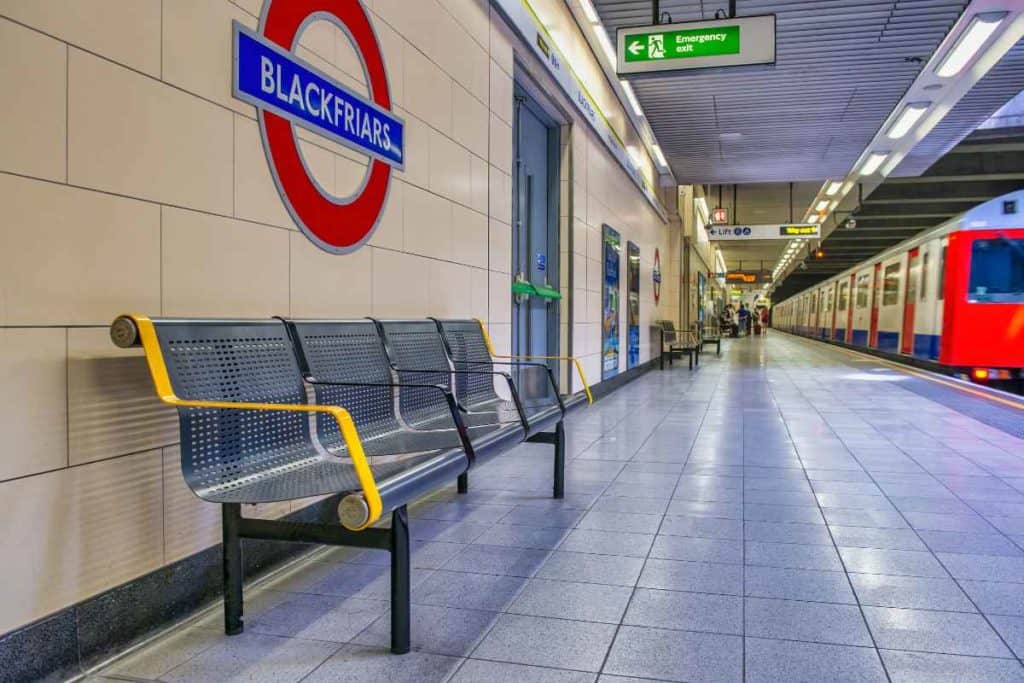
5. Research how the local public transportation works
Depending on where you’re traveling to, generally speaking, throughout Europe, you can expect the public transportation to be significantly well connected and used by the locals and visitors.
Whether it’s traveling between the airport to the city center, around the city, or to nearby towns and sights for day trips, it’s a good idea to get acquainted with what it’s like to:
- Buy metro tickets, find out how much they are, and what kind of tickets they have?
- How to ride the bus, how to pay onboard with a card or cash?
- What other types of public transportation does the city have? Ex: trams, trains, water taxis, bikes, etc.
You’ll obviously learn as you go, but with so much information available online nowadays, a quick Google search can help you become aware of how public transportation works.
When I landed in Athens solo recently, I was going to take the metro to my Airbnb, but when I got to the ticket machine, I realized that buying metro tickets was not as straightforward as it used to be when I was studying abroad in Greece a few years back.
The wording of the different types of tickets in English was a bit confusing.
I pulled up a quick YouTube video (thank goodness I had a local SIM card in my phone!) and used it as a guide to get my tickets just fine.
6. Does your destination use Uber?
Before landing, make sure to check out if the city you’re traveling to has Uber or another equivalent of Uber.
In the UK for example, there is Uber, and other alternatives like Free Now, Bolt, and Gett, while in Spain, Cabify is widely used in addition to Uber.
So make sure to check out if your destination has Uber or what other alternatives they have, and if you plan on using them at one point, make sure to download and make an account before landing so it’s ready to go.
When I went to Santander in Spain, I realized a bit late that they didn’t have Uber and that the only bus that took you to the city center was still a 20-minute ~uphill~ walk from the drop-off point to my Airbnb.
Yes, it was poor planning on my part, as I could have downloaded Cabify and ordered one from the airport.
But I didn’t, and so let’s just say I got a good workout on that day. At least the views were stunning!
7. Sit opposite the driver in the backseat when taking a Taxi or Uber
When I use Uber or any ride-share service, I don’t leave the ride-share app on my phone so I can follow the map or anything that may come up. I also aim to sit in the backseat, opposite the driver for visibility.
You just never know, I don’t have any horror stories or close calls with sketchy drivers, but it serves as peace of mind to keep an eye on your driver and where they’re going as you follow along on your map.
8. Keep an eye on your belongings as you board public transport
Be mindful of where you keep your valuables on your person, don’t keep your phone, wallet, or anything of value in your pockets, thinking that no one would think of sticking their hand in to take something.
I’ve never had anything stolen *knocks on wood* but I was *almost* successfully pickpocketed in Rome by a girl walking in front of me onto the train. She boarded the train in front of me and then tried to get out pretending that she got on the wrong train.
She got very close to me and had a thick jacket hanging on one of her arms to cover her other hand trying to open my crossbody bag.
This happened right in front of me, but I reacted quickly grabbed my bag, and moved away as quickly as possible.
She did manage to open my bag, but she didn’t have a chance to take anything. It just goes to show that it’s not only taking care of what you put in your pockets but backpacks and crossbody bags that hang in front of you.
Phone/Digital Best Safety Tips

9. Bring an unlocked phone and buy a SIM card at your destination (or buy one on Amazon)
Depending on your phone plan at home, and your destination, some phone companies offer service and coverage abroad, at no extra cost, or a small fee.
For instance ATT and their coverage throughout North America and T-Mobile and their coverage in Europe.
I have ATT and if I’m traveling to Europe, I prefer to buy a local SIM card to use on my unlocked phone (unlocked phone: phone with no contract with a company, is not being financed).
I always recommend getting a local SIM card at your destination because
- They have better coverage
- Are less expensive
- Offers flexibility to your needs as a traveler because it’s pay-as-you-go/rechargeable.
To make it even easier, you can also purchase a SIM card on Amazon, so you don’t spend time searching Kiosks or local phone stores, where you may risk purchasing an expensive SIM card.
💡Pro tip: Phone stores like Vodafone have SIM cards, but in my opinion, are overcharged. If you’re traveling to the UK for instance and you do go into a shop, go to an O2 and ask for the £10 SIM card which offers 8 GB of data, local phone calls and texts, with EU roaming. If you’re traveling to other European countries like Spain, check out local phone shops that fix phones – they usually have the best deals with less fuss.
On my trips to London, I’ve used the £10 SIM Card by O2 as well as the 20 GB SIM card by GiffGaff, for £10, and it worked great! The actual SIM card is only $2.00 USD on Amazon.
The Giffgaff SIM Card pack comes with clear instructions on how to make your account and load your £10 ($13 USD), and it even comes with a metal instrument to help pop out your old SIM card and insert your new one.
If you have a digital SIM, you can also purchase a digital SIM card online, and simply activate it according to the instructions
When you have your SIM card ready to go, you can get connected right away for directions, order an Uber, etc.
📲Click here to buy the 20 GB SIM Card by GiffGaff
10. Download WhatsApp
If you haven’t done so, download WhatsApp (the main messaging app in Europe and Latin America) and create an account, as this is the way that people communicate, make appointments, or get information in many countries throughout the world, but mostly Europe and Latin America.
When making your account you can use your American phone number, and continue to use it as you travel around the world, and it works just fine when communicating with locals.
Whether you plan on making friends and texting them, or you’re signing up for free walking tours, it’s helpful to have WhatsApp.
Many of the free walking tour sites ask for your phone number (WhatsApp) to communicate with the attendees with updates and helpful information on the tour, including cancellations – so definitely get that set up!
You can search for it on the App Store or Google Store. It’s free to download and use.
11. Make digital copies of your passport and credit cards
As another safety precaution when you’re traveling, ensure the protection of your passport, important travel documents, and credit cards by taking scans of them and having digital copies just in case the physical copies get stolen or lost while you’re traveling.
If your passport does get lost or stolen, refer to these instructions by the US government on what to do.
In the same way, make sure that you’re backing up your phone – messages, photos, and any other important information just in case your phone gets stolen/lost.
A good way to safeguard all the private info you probably have stored on your phone (account passwords, banking info, etc,) you can protect your iPhone from thieves by simply pressing a few buttons for extra security.
Even though lost photos or messages may sound less important than a lost credit card or passport, it’s still valuable things that can easily be salvaged if you back them up often, easily.
12. Get a silicone case for your phone/ get a lanyard
Though it’s not a necessity, getting strategic about how you protect your phone could be worth your time.
Especially if you’re someone who tends to misplace their phone, or you know you’ll constantly be taking your phone in and out of your bag/pockets for photos as you’re sightseeing (that’s basically all of us 🙋🏽♀️)
The more I’ve traveled around Europe, the more I’ve seen people (both locals and visitors) that opt for carrying their phones around their neck or wrapped around their wrist with a phone lanyard, and honestly, it’s a great idea for when you’re traveling to protect against theft.
But even if you don’t want to have your phone hanging from your neck or wrist all day, choosing a phone case made of silicone could be good.
My silicone phone case is not so easy to swiftly snatch from my bag or pocket because of the rubber material, as it gets caught on the material to the point that I could feel if someone tried to get my phone from my pocket, as an example.
It’s also easier to hold in my hand without dropping it because of the extra grip.
13. Don’t post everything in real time on social media
Whether you have a small or large following, it’s a good idea not to share where you are in real time, especially when you’re traveling solo.
Aside from the fact that you never truly know who is watching your stories, it could open up the window for people to find you through your geotagging which can lead to uncomfortable run-ins with people who have nothing better to do than follow you via the locations you’re at.
A safer option, in which you can still share your location safely, is just to share the photos later when you’re not at that same location anymore, as a day recap.
Or what many other solo travelers do is that they’ll share a broad location, for instance.
Instead of sharing the location of a specific restaurant, you can manually type 📍Rome or 📍Italy or 📍🇮🇹 – that way there’s no tag that anyone can click and get any locations, but you’re still sharing where you are, vaguely.
14. Consider getting a VPN
Internet safety is very important, especially as you travel around, borrowing wifi from random cafes, airports, and even your Airbnb/hotel, and a VPN may be the best solution for you.
As a solo Latina traveler who works remotely, I started to use a VPN more seriously as I travel, which helps keep my personal and work data encrypted and away from the potential of being hacked.
As a bonus, you’ll also be able to watch your shows from back home, and also log in to accounts safely as if you were in your home country.
I’ve personally been using ExpressVPN, which I have had a great experience with lately.
They have a 30-day free trial, and you can use it on up to 8 devices, from Apple to Android, Windows, Kindle Fire, and more!
ExpessVPN has access to servers in 105 countries, bypasses censorship, and it’s very easy to install, and of course, not to mention, safe. It blocks trackers, and malicious sites, and can even block ads if you want.
💻Click here to try out ExpressVPN for FREE for 30 days
15. Know local emergency numbers
Be sure to be aware or keep on hand the local emergency numbers wherever you’re traveling to.
Depending on where you are in the world, these emergency numbers (the equivalent of 911 in the US) will vary.
Generally speaking, throughout Europe, and a few parts of Asia 112 and 110 are the 911 equivalent, and a few countries in Latin America, including Argentina, Uruguay, Panama, and more may use 911.
North America uses 911 – from Canada to Mexico.
Thanks to Google, it’s simple to search for these important numbers, so just make sure to keep them on hand, maybe put them in your phone, whether it’s the emergency number, local police, or nearest hospital.
Hotel/Airbnb Best Safety Tips
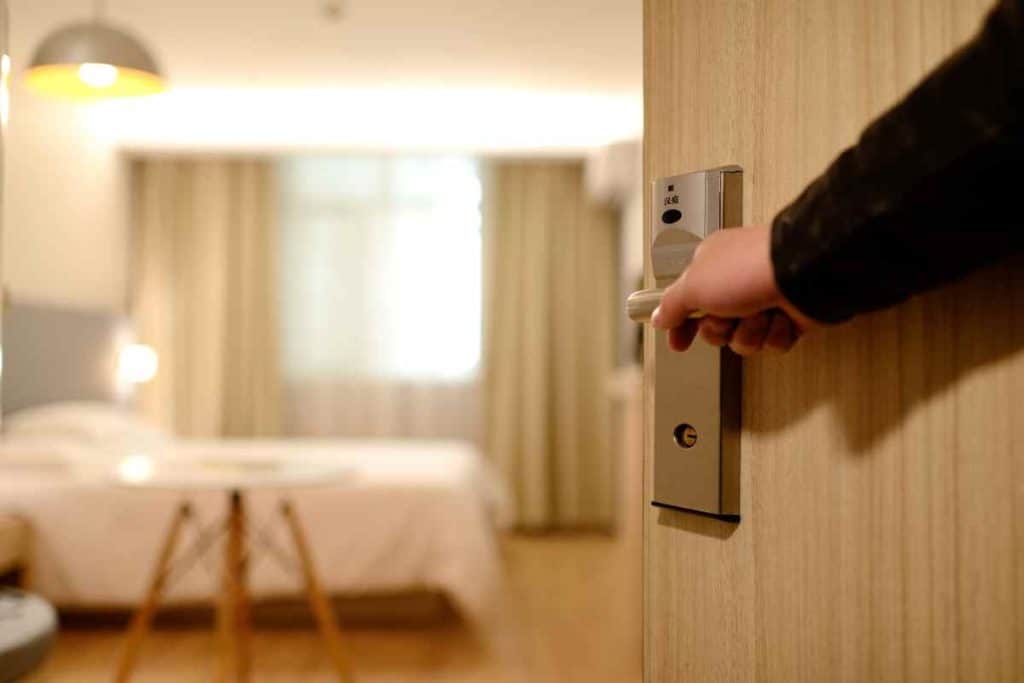
16. Bring a carbon monoxide detector
Carbon monoxide is a poisonous, odorless, colorless, tasteless gas that may escape appliances when installed poorly, and in places with little to no ventilation, which causes a serious potential for toxic and life-threatening fumes if inhaled.
Surprisingly, there are an alarming amount of Airbnb and vacation rentals that don’t have carbon monoxide detectors, which you can check on the listing profile under “What this Place Offers” and “Home Safety”.
In recent years, carbon monoxide leaks have been one of the main causes of accidental (and preventable) deaths among travelers, and so to prevent this, I’ve started traveling with a portable carbon monoxide detector.
Airbnb has started to encourage hosts to install carbon monoxide detectors after a very famous tragic case in Mexico City, inside the rentals. However, the problem is that it’s not a local law yet in many cities around the world, and so many hosts may advertise they have one, even if it’s not true to keep Airbnb out of their business.
I mention all this not to instill fear, but just to create awareness.
It’s given me peace of mind to travel with a portable carbon monoxide detector, knowing that I don’t have to rely on anything/anyone for something like a poisonous gas leak.
ℹ️ Click here to buy the portable carbon monoxide detector that I take on my travels
17. Purchase a portable door lock for your Airbnb
Whether you stay at a hotel or an Airbnb or other Airbnb alternatives, for further peace of mind, a portable lock for your door may be a good idea.
As solo women travelers, we have to cover our bases, and there are too many horror stories online and in real life of break-ins or creepy people following or trying to force their way into rooms, that we don’t need to go into details.
For my own security, I’ve purchased one for my travels as a solo Latina, and the good thing is that there are tons of great options!
From small and compact like this portable door lock to a door stop alarm that alerts you if anyone tries to go in while you’re sleeping.
ℹ️ Click here to browse the best travel safety door locks for solo female travelers
18. Research to find out if it’s safe to drink the water from the tap
Some cities, especially in Europe, have great drinking water systems that make drinking straight from the tap not only a safe option but also the best when it comes to taste!
Based on personal experience, Madrid, Bilbao, and Rome have some of the cleanest and best-tasting water in Europe, readily accessible from the tap and multiple public water fountains.
The city of canals – Amsterdam is also highly regarded for its tap water, and cities like Vienna whose citizens and visitors quench their thirst with water straight from the Alps.
On the flip side, there are cities and countries around the world that are struggling to deliver pure and safe drinking tap water to locals, and where you should be cautious when taking a sip straight from the tap.
One of the most popular destinations is my beloved Mexico, as well as a few more countries with unsafe tap water.
Of course, whether you can or can’t drink the local tap water is city-specific, so when doing your research, make sure to Google your specific city’s tap water conditions.
Public/Walking Around Best Safety Tips
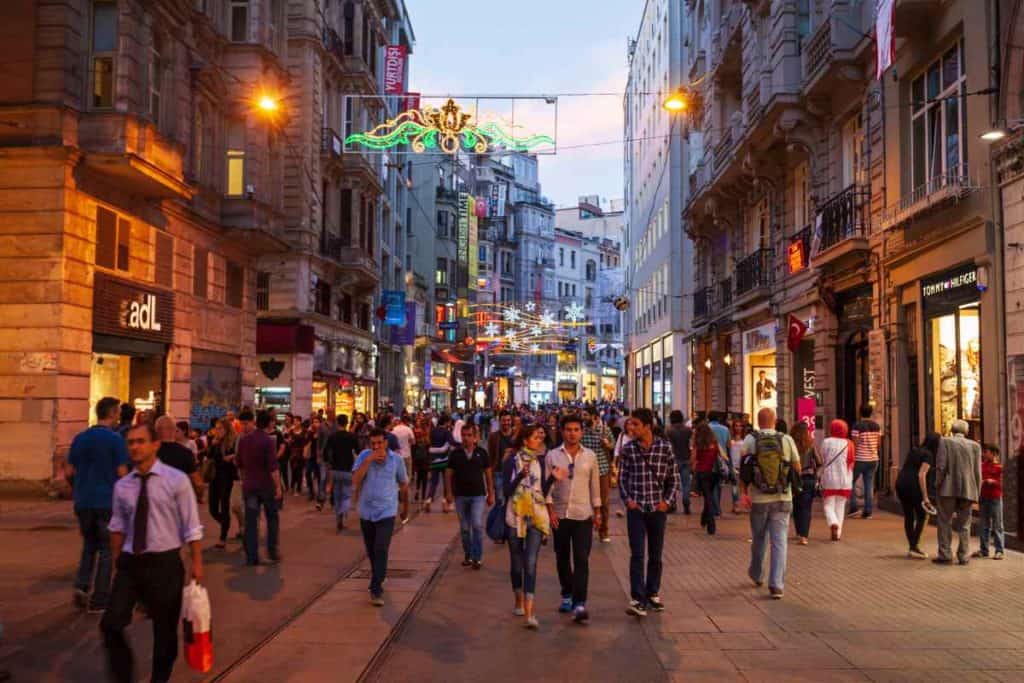
19. Be aware of your surroundings
It speaks for itself, but as you’re traveling, and sightseeing, it’s easy to get distracted by the sights and landmarks. However as you’re discovering and feeling awe for it all, be mindful of your surroundings.
People around you, where you are, street names, and other landmarks are all important things to keep note of as you’re moving around.
Especially if you’re solo traveling as a female, unfortunately, you are most likely to be targeted by pickpockets, scammers, cat-callers – you know, all the fun people 🙃
Take your pictures, stare in amazement at whatever you’re seeing, do some people watching at cafe’s, look at your Google maps occasionally to guide your self-guided tour, but just keep aware and alert of yourself and where you are.
At the end of the day, we are all tourists when visiting cities from which we are not from, and as great as it is to interact with the local culture and people (I encourage it) it’s also important to be aware of who you’re interacting with, both local and other visitors.
20. Plan your day ahead of time
This tip is mostly to help keep your days organized, so that when you’re out during the day exploring, you not only know where to go, but you’re walking with purpose.
Planning your day ahead of time will also reduce the amount of times you may get lost, and further enrich your knowledge of the area, and confidence in knowing generally where things are, and where you’re going.
💡 Pro tip: A great and fun way to get acquainted with your surroundings, and the lay of the land, and get local recommendations is to kick off your travels with a free walking tour! Make sure to look them up and sign up for one if available.
21. Consider a safety alarm
Depending on your level of comfort, and where you’re going, if it gives you peace of mind, consider packing a portable safety alarm for personal protection.
Whether you want that peace of mind for when you’re out and about during the day around town, or you’re planning on going out at night, and you rather keep with you something that would help draw attention to you if something happened, this is a great item to have on you.
There are different safety alarms out there, and the reason why I suggest a safety alarm like Birdie is because it features a loud alarm with strobe lights, in a very compact, and discreet keychain device.
It’s also easier to travel with a safety alarm as it’s allowed on flights, in comparison to the strict rules against flying with pepper spray, and other self-defense keychains.
ℹ️ Click here to buy the travel-friendly Birdie personal safety alarm
>> Read More: Perfect Gifts for the Traveling Women in Your Life
22. Prepare your day bag
Fill a good quality travel day bag with essentials you may need throughout the day, from accessories like scarves or gloves to a water bottle and cough drops, band-aids (even a small first aid kit), an umbrella, or Kleenex – it’s just good to be prepared especially if you anticipate being out the majority of the day.
Especially if you’re solo traveling, it’s better to have all your essentials with you, without having to go searching for them to buy them when you need them, especially if you’re out on a day trip or in a place that may not have shops selling whatever you need.
Just be prepared.
Recently I’ve been loving the Expandable Backpack by Béis, but any backpack that you often travel with, and fits in your essentials is key.
23. Don’t carry a passport on you
When you’re out and about all over town or the city, leave your passport at your hotel or Airbnb. There’s no need to have it out with you unless there’s a specific reason why you need it.
It’s much safer to keep it at your lodging than out with you, in case you get pickpocketed, or you forget your bag somewhere. It’ll be much safer if you leave it behind.
24. Use Google Maps and CityMapper to get around
After you insert/activate your local SIM card, you might as well make a shortcut on your phone to get to Google Maps because it’s one of the easiest ways to get around anywhere and look up directions.
Is it perfect? No, not at all, but Google Maps works all over. There are, however, other map apps that work even better depending on where you are.
Enter: CityMapper.
CityMapper is a great alternative to use in numerous cities in the U.S. Europe, and Asia, and honestly, it’s sometimes a better alternative to Google Maps, especially to use in those cities that have great public transport and numerous route options based on time, cost, and more!
25. Don’t wear earphones in public – all the time
No further explanation, except that when you’re in a new city, and you’re trying to gather your bearings, it’s a good idea to keep all your senses on.
Whether it’s something happening near you that you can’t hear, or someone watching you or even following you – there are plenty of things that could happen, so it’s best to keep your eyes and ears alert to pay attention to your surroundings.
26. Research common local scams
Whether it’s your first time traveling solo, or you’re traveling to a new city, it’s not a bad idea to get an idea of the most common tourist scams and other rip-offs so you don’t fall victim to it.
Everything from avoiding the ATMs with the worst exchange rates in the city center to informing yourself on standard taxi rates within the city and airport to avoid taxi scams, to learning about the rose scam so you don’t accept a “free” rose from someone, only for them to follow you to pay them a tip.
Another great thing to research is where to eat authentic meals that don’t cost a pretty penny like they probably would in the main squares, and not feeling pressured to eat at a restaurant where the waiters try to lure you in if you don’t want to.
27. Learn a few words in the local language
Speaking of locals, learning at least a few words in the local language will go a long way when you’re traveling.
Whether it’s learning the helpful basics like yes, no, please, thank you, or learning full phrases to order a coffee or a specific dish, it is not only helpful to learn a bit of the local language, but it also shows a sign of respect to the local culture and people.
In turn, even if you’re not confident with your skills, locals will appreciate that you at least tried and can offer a bit of help or guidance if you have a question or you’re asking for their recommendations.
Best Safety Tips for Going Out
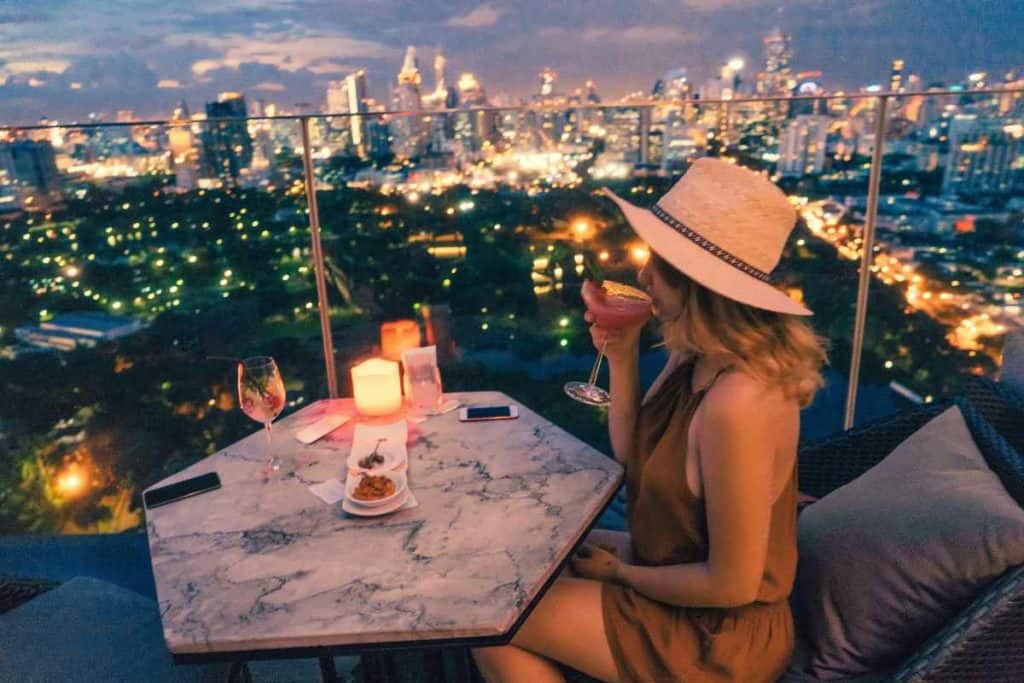
28. Know your limits
You’ve met a few new friends, you’re hitting it off with someone, or you’re just enjoying socializing with people from different corners of the world, and you’re having a blast!
This is such an important part of traveling – connecting with others and having a good time doing it, and you should do it! Safely, of course.
Trust your gut and stick to your limits when it comes to your drinking, other activities, how late you want to stay up (and out), and who you’re hanging out with.
Monitor your drinks and food, don’t leave them unattended, don’t accept random drinks from people, and trust your instincts.
29. Be friendly, but don’t overshare
If you’re traveling solo, it’s best to keep the details of your travels to yourself.
What you decide to share is up to you, how you feel about the people/person you’re sharing it with, and how comfortable you feel, but you don’t have to give details if you don’t want to.
You just never know people’s intentions and what they want to do with that information, so never feel obligated to answer people’s questions about your plans, and other details about yourself that you don’t feel like sharing.
In any case, you can also lie to get out of a situation, and just move on.
30. Be aware of what time the last train/bus to your accommodation is
If you plan to go out at night and stay out for a while, make a game plan as to how you’re going to get back home.
Learn the late bus/train schedule from where you’ll be generally and your place, and if you plan on catching the last train/bus, keep that hour in mind so you have enough time to make it and get home safely.
If you think you may stay out longer and there is no night bus or 24-hour metro, or you don’t feel safe to be on your own that late, make sure to have the taxi app, Uber, or another local ride-sharing app on your phone ready to order your ride, and with your Airbnb/hotel’s address on hand.
31. Bring cash
Carrying some cash on you is a good idea, especially if you’re traveling through a city that is not widely accepting cards as much as other card-only cities like London.
When I travel, I mostly use my travel credit card, but I still exchange some money for local currency with my bank before I leave the U.S., for the best exchange rate, and so I land with cash, which has worked out for me just fine.
Even in cities like London or anywhere where cash is not king, you never know when you’ll need some cash to solve a quick problem or give a tip for a tour or activity.
Sometimes the tech fails, and maybe that restaurant or coffee shop that you wanted to try is only accepting cash that day because their card machine broke, maybe you need to pay a local tourist tax in cash upon checking in at an Airbnb or vacation rental, or you need a few coins to pay for the airport shuttle into the city ( all of which have happened to me).
Just bring some cash.
32. Walk through busy and well-lit streets
This one is also pretty self-explanatory. Don’t walk through dark alleys, or empty streets, and trust your gut if you feel like Google Maps is taking you down streets that are looking a bit out of your comfort zone.
If you’re walking alone at night, try to stick to the busier and well-lit areas, while still being vigilant and alert of your surroundings.
33. Ask your Airbnb host for safety tips
When I was in Greece solo traveling, I knew I wanted to go out one night but wasn’t sure about what the neighborhood where I was staying was like at night. So, I asked my host who is also a female and from the area for her recommendations.
Don’t be shy to shoot your host a message asking them specific questions you may have about the neighborhood, any safety concerns you may have, or any safety tips to keep in mind while staying in the area especially if they are female, too.
Best Safety Tips for Clothes and Outfits
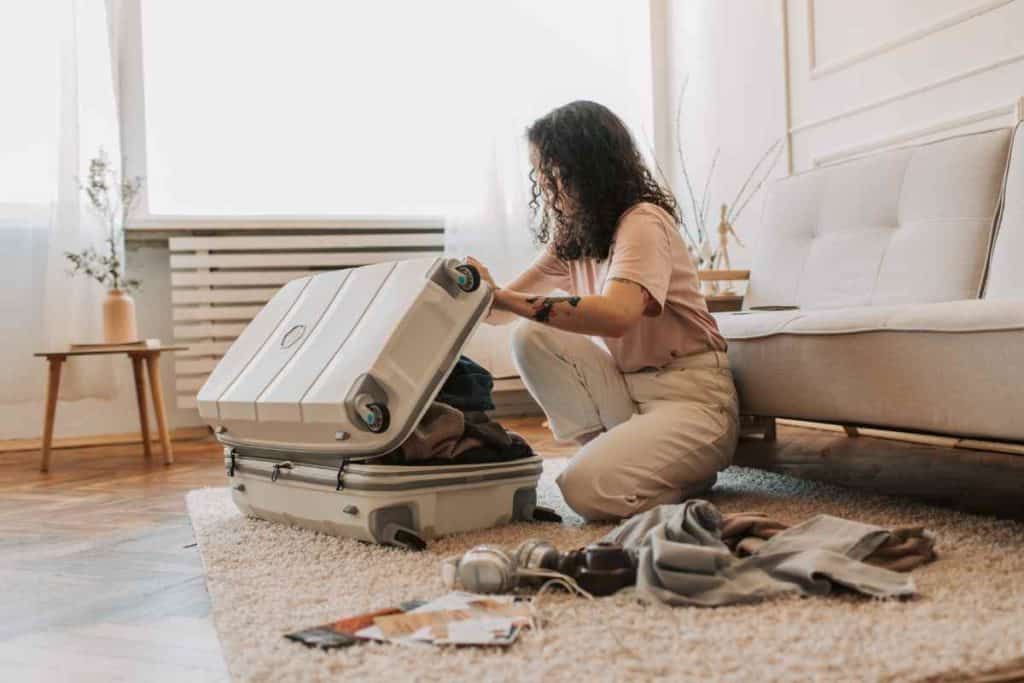
34. Research local etiquette and norms when it comes to clothing
Yes, dress like yourself and be comfortable, but as you’re packing, it would be a good idea to learn about what the local style is like where you’ll be visiting.
Not only for inspiration, but also to see if there is any type of dress code to take into consideration to not stand out too much, or worse, be disrespectful.
This of course depends on where you’re going, but some destinations may be more conservative than others, so it may be that you need to pack a head scarf to enter a few sacred spaces, or you should avoid wearing shorts, or some other type of clothing.
35. Pack light
I used to be that person who had such a hard time condensing their luggage down to the main necessities and would worry about packing the “what if” outfits.
But after traveling for the past 10 years, I’ve learned how to live with less, and each time I travel with less, I thank myself because I don’t have to carry and drag heavy luggage around extremely walkable cities with cobblestone streets.
When you travel with less, it’s less things you have to think about and less things that are cluttering up your mind.
You have what you have, you pack and unpack to re-pack again, you can carry it all, and it’s easier to do on your own, without requiring anyone’s help with your bags.
With time, you get better at identifying your true clothing essentials, nailing down your capsule wardrobe, general travel necessities, and what you can do without.
Something I like to do to avoid overpacking is find style inspiration for the city I’m visiting to blend in a bit as well.
Just recently I took a 4 day trip to Italy with my Béis Expandable Backpack as my only bag, and before that, I traveled to 3 European cities with one backpack for 1.5 weeks. This was unimaginable for me only a few years ago.
36. Don’t bring flashy jewelry
Another way to remove any unwanted attention to you is to avoid packing flashy and expensive jewelry.
Instead of taking your expensive and flashy jewelry with you, buy less expensive jewelry that you wouldn’t get so upset if you lost.
Lastly, on the topic of jewelry, I can’t confirm this myself, but I’ve also heard of other girls suggesting to pack a fake engagement ring and slip it on to ward off some male attention, especially in conservative countries.
The Wrap-Up: My 36 Best Safety Tips as a Solo Latina Traveler
I hope this guide was helpful and gave you a few more general safety tips for travel, with a few safety suggestions examples, to add to your knowledge of the best safety tips for solo travelers, especially as solo Latinas out in the world.
As a recap, here are My 36 Best Safety Tips as a Solo Latina Traveler:
Pre-Departure Best Safety Tips
- Research your destination well
- Research necessary vaccines and visas
- Enroll in STEP
- Plan arrival and departure flights during the daytime if possible
Best Safety Tips for Public Transportation/Uber
- Research how the local public transportation works
- Does your city use Uber?
- Sit opposite the driver in the backseat when taking a Taxi or Uber
- Keep an eye on your belongings as you board public transport
Phone/Digital Best Safety Tips
- Bring an unlocked phone and buy a SIM card at your destination (or buy one on Amazon)
- Download Whatsapp
- Make digital copies of your passport and credit cards
- Get a silicone case for your phone/ get a lanyard
- Don’t post everything in real time on social media
- Consider getting a VPN
- Know local emergency numbers
Hotel/Airbnb Best Safety Tips
- Bring a carbon monoxide detector
- Purchase a portable door lock for your Airbnb
- Research to find out if it’s safe to drink the water from the tap
Public/Walking Around Best Safety Tips
- Be aware of your surroundings
- Plan your day ahead of time
- Consider a safety alarm
- Prepare your day bag
- Don’t carry a passport on you
- Use Google Maps and CityMapper to get around
- Don’t wear earphones in public – all the time
- Research common local scams
- Learn a few words in the local language
Best Safety Tips for Going Out
- Know your limits
- Be friendly, but don’t overshare
- Be aware of what time the last train/bus to your accommodation is
- Bring cash
- Walk through busy and well-lit streets
- Ask your Airbnb host for safety tips
Best Safety Tips for Clothes and Outfits
- Research local etiquette and norms when it comes to clothing
- Pack light
- Don’t bring flashy jewelry
Do you have any tips to share yourself? Let’s share the wealth in the comments below and give other solo Latina travelers the best safety tips ever for their own adventures.
To more (safe) travels like this,


